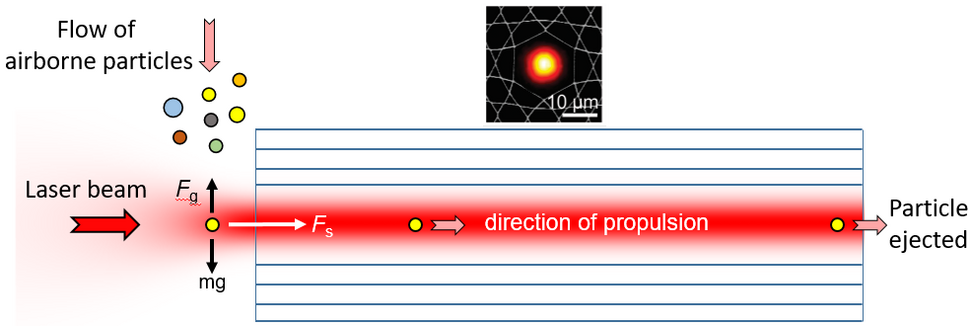New Particle Analysis Technique Paves Way for Better Air Pollution Monitoring

Efficient monitoring of airborne particulate matter (PM), especially particles with aerodynamic diameter less than 2.5 μm (PM2.5), is crucial for improving public health. Researchers in the group of Philip Russell at the Max Planck Institute for the Science of Light (MPL) now develop a new technique for continuously monitoring both the size and optical properties of individual airborne particles. They used optical forces to automatically capture particles in the air and propel them into a hollow-core fibre for analysis. The approach overcomes several limitations of existing methods by offering highly reproducible, real-time results and an unlimited device lifetime.
“The most unique feature of our technique is that it can count the number of particles — which is related to the level of pollution — while simultaneously providing detailed real-time information on particle size distribution and chemical dispersion,” said research team leader Dr. Shangran Xie. “This additional information could be useful for fast and continuous in-situ pollution monitoring in urban areas and industrial sites, for example.”
For the new analysis approach, airborne particles are trapped inside a laser beam by optical forces and propelled forwards by radiation pressure. The trapping force is strong enough to overcome the gravitational force acting on very small particles such as PM2.5 and automatically aligns the particles with a hollow-core photonic crystal fibre. Once aligned, the laser light propels the particle into the fibre, causing the laser light inside the fibre to scatter and create a detectable reduction in the fibre transmission. The researchers developed a new signal processing algorithm to retrieve useful information from the particle-scattering data in real-time. After detection, the particle simply ejects from the fibre without degrading the device.
The approach could offer a better way to monitor air pollution. It is especially promising for analysing fine particulate matter measuring less than 2.5 microns which can reach deep into the lungs and cause health problems. They have filed a patent on this technique and plan to continue to develop prototype devices, such as ones that could be used to monitor air pollution outside the lab.
For more information see the Optics Express article “On-the-fly particle metrology in hollow-core photonic crystal fibre” (https://doi.org/10.1364/OE.27.034496) and media coverage in English and German press.
Contact
Edda Fischer
Head of Communication and Marketing
Phone: +49 (0)9131 7133 805
MPLpresse@mpl.mpg.de





